Sticking Brake Caliper Guide Pins
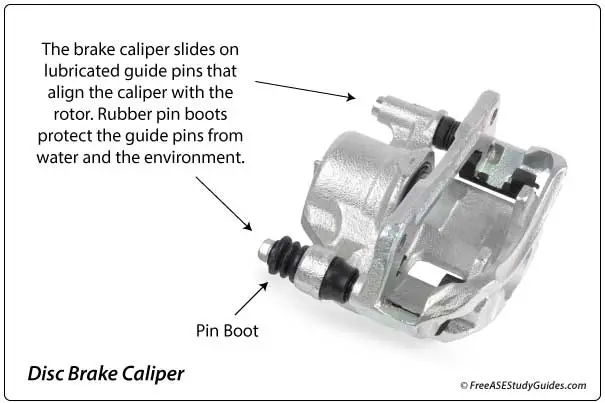
Brake caliper guide pins or slide pins allow the caliper to slide to apply clamping force while keeping it aligned with the rotor. It is vital to brake performance that the caliper slides freely over these guides. Sticking or seized slides, guide pins, and caliper pistons result in a pull while braking, brake drag, overheated and warped rotors, and uneven pad wear.
On most systems (floating caliper), it is normal for the inside pad to wear a little (~2mm) more than the outside pad. Two millimeters is not much. When there is a noticeable difference, further inspection is required.
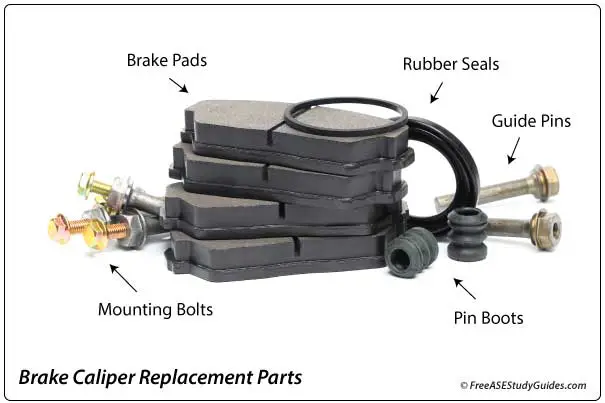
Caliper slide pins stick or completely seize inside their bore. This common problem results from damaged protective pin boots and environmental contamination. In addition, once stuck, they can be tough to remove. A replacement caliper or a kit containing pins and sleeves may be required to fix the problem.
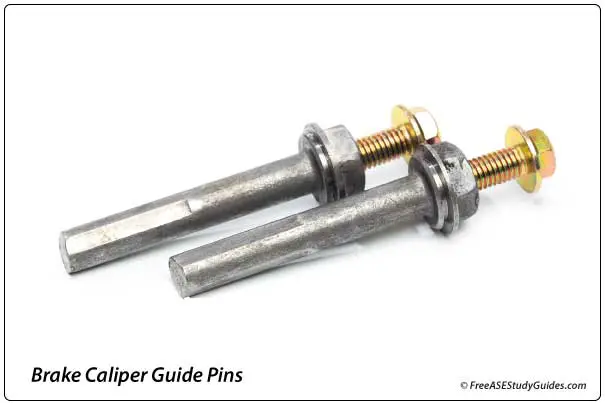
Guide pins are lubricated with synthetic brake grease and fit into a bore at each end of the caliper's anchor bracket. Always use the correct lubricant. Some pins have a gold or chrome finish. Grinding off the finish leaves the pin susceptible to pitting and excessive wear. Many slide pins have a rubber bushing or O-ring around the stem to locate and fit the pin snug in its bore.
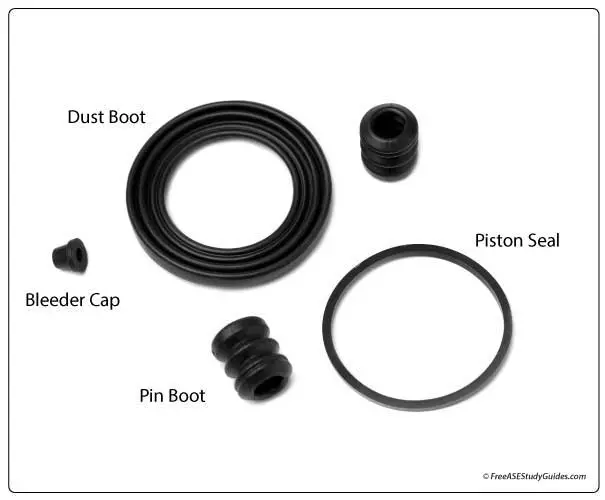
Avoid petroleum lubricants that swell rubber parts. Instead, most manufacturers recommend synthetic lubricants made for brake systems, like silicone or PAG. In addition, high-temperature graphite or synthetic lubricant reduces friction from metal-to-metal contact.

Floating calipers are not mounted directly to the steering knuckle or suspension component. Instead, they float on the guide pins bolted to the anchor bracket fastened to the steering knuckle.
Uneven Brake Pad Wear
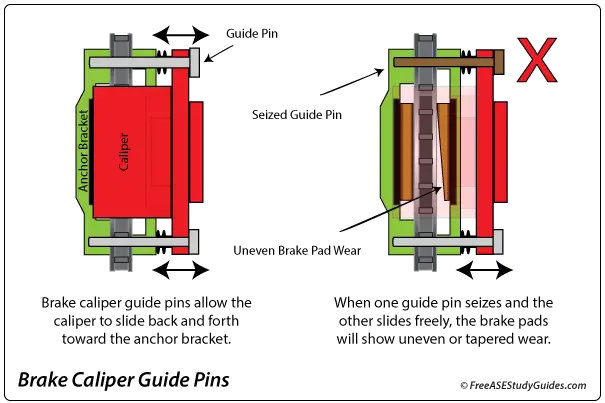
They contain a single piston that moves the inboard pad into contact with one side of the brake rotor. After the inboard pad contacts the rotor, the caliper slides or pulls the outboard pad into contact with the other side of the rotor. These two pads squeeze the rotor. The friction between the two pads causes the vehicle to stop.
When the pins are seized, the outboard pad does not slide fully into contact with the rotor. As a result, the inside brake pad does most, if not all, of the braking. In addition, when one guide pin seizes up and the other slides freely, the inside brake pad will wear tapered at an angle.